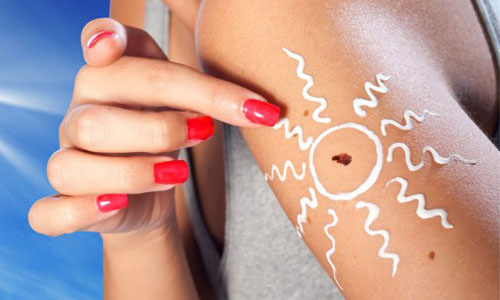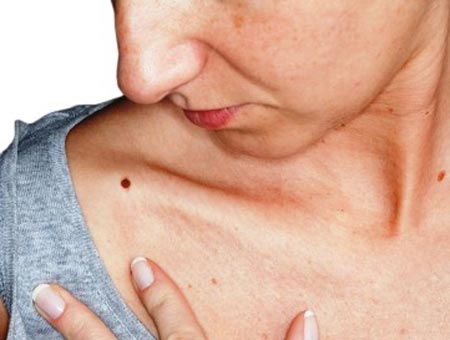
Sunny climate is appealing, but too much sunshine can be dangerous. Tropical countries have very high rate of skin cancer and Australia have the highest death rate from this disease. Luckily, in Vietnam, the rate is still very low due to the fact that Asian skin are genetically protective against this deadly disease. But if you are of the fairer skin…beware of the Vietnamese Sun..!
How does the sun cause cancer?
The sun’s rays provide light and warmth. But there are also rays called ultraviolet radiation (UVR) which you can not see or feel, but they can damage skin and are the most common cause of skin cancer. The sun also ages skin prematurely and contributes to some eye problems, including cataracts.
Who is at risk from skin cancer?
Everyone. Although people with fair skin and blue eyes have a higher risk, people with darker skins can still develop skin cancer. Outdoor workers are at risk – so are indoor workers who spend weekends or holidays in the sun. People with many moles or freckles are more at risk, so are people who were sunburnt or were in the sun a lot when they were children. It may be that children’s skin is more easily damaged by UVR – that’s why it’s important to get children and teenagers into the habit of protecting their skin.
How serious is skin cancer?
There are three types of skin cancer. Most can be easily treated, but one type of skin cancer – melanoma – can be fatal if not detected early enough.
What are the warning signs of skin cancer?
The first sign is usually :
- A spot, mole or freckle that has changed colour, shape or size.
- A new spot that’s different to other spots on the skin
- A sore that doesn’t heal.
See your doctor if you notice any of these changes.
How can I protect my family from skin cancer?
- Try to avoid the sun when UV rays are strongest – between 8.30 am and 4pm. This is especially important in summer when UV rays are strongest. Whenever you or your children are outdoors, you should:
- Wear hats that shade face and neck – broad brimmed hats or caps.
- Wear UV protective clothing with longer sleeves, and long shorts (or a longer skirt) or trousers in a closely woven fabric.
- Stay in shade as much as possible (but remember that sand, concrete and water reflect UVR too, so you may need to cover up with clothes or sun-screen too).
- Use water resistant broad spectrum sunscreen with minimum SPF30+ on the label. Apply 20 minutes before going out in the sun. Reapply every two hours. Sunscreen won’t block out all UVR, so never rely on sunscreen alone.
- It’s best to keep babies under 12 months out of the sun. If this is unavoidable, plan your day to avoid being outdoors when UV rays are strongest, and protect the baby’s skin with clothes and a hat.
- Babies need sunscreen too: it’s safe to use it on exposed areas like the face, ears and back of hands.
- Check everyone’s skin regularly for changes in any spots, moles or freckles
How can I protect my eyes from UV damage?
Wear sunglasses (wraparound styles are best) and a broad brimmed hat that shades your eyes.
Do you need to protect your skin on
cloudy days?
Yes – UV rays can do harm even on overcast days.
Dr. Mark graduated from the University of Louisville School of Medicine in the USA in 1995 and then went on for training in Internal Medicine at Baylor College of Medicine in Houston, Texas. Dr. Mark thus has quite broad experience crossing multiple fields.
His Dermatology Degrees and Diplomas include; Masters Degree in Medicine in Skin Cancer from the University of Queensland (Australia), Diploma of Practical Dermatology from Cardiff University(U.K), and Diploma in Dermoscopy from Graz Medicine University (Australia).
In terms of Skin Cancer Screening, Dr. Mark Siefring, utilizes Dermoscopy and Digital Dermoscopic imaging to evaluate skin lesions that may be suspicious for skin cancers like Melanoma, Squamous Cell Cancer, and Basal Cell Skin Cancer. Using this technique, which is analogous to placing a microscope on the skin to examine a lesion, many benign lesions that look odd or suspicious can be clearly recognized through patterns on Dermoscopy that show them to be benign, which reduces the number of unnecessary skin biopsies and skin surgeries, while the technique allows for the early recognition of those patterns that are consistent with the various skin cancers and thus to biopsy them sooner before they have grown or advanced.
In addition, Dr. Mark Siefring is a broadly experienced general dermatologist at Stamford Skin Centre. Dr. Mark Siefring has extensive experience within the Field of Aesthetic Medicine, performing procedures like Botox, Dysport, Restylane, and the use of Laser modalities in the treatment of Nail Fungal Infection, Hair Removal, Tattoo Removal, and Skin Rejuvenation.
For more information, contact your dermatologist at
Stamford Skin Centre to accurate diagnosis & safe treatments
“Research by Dr. Mark”

